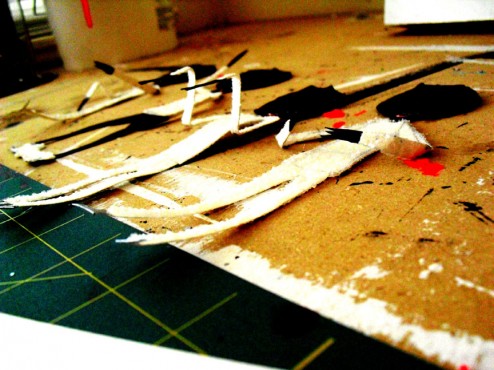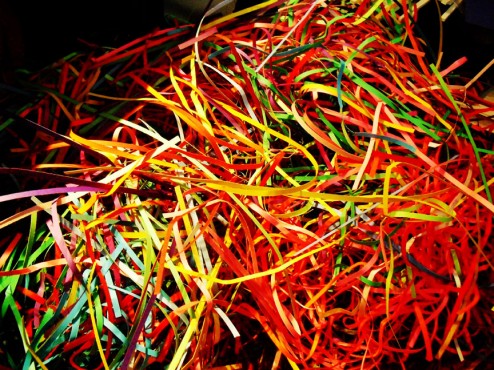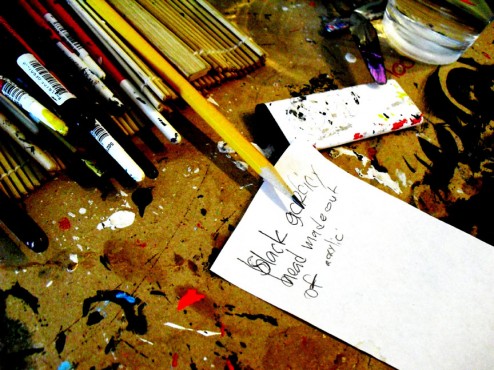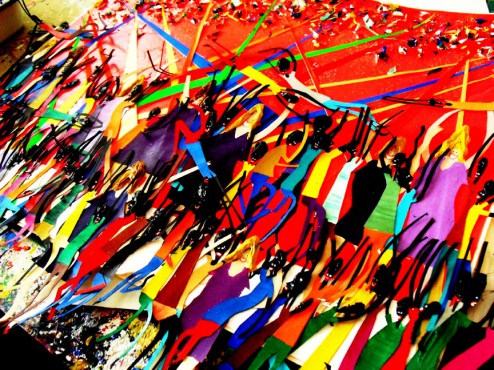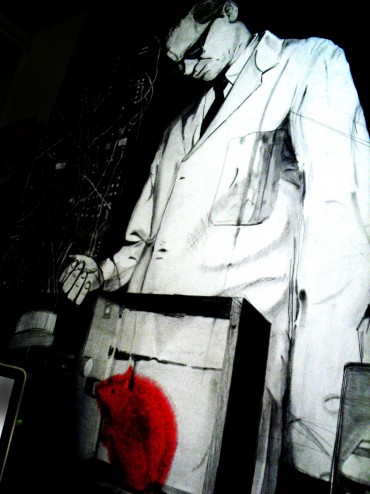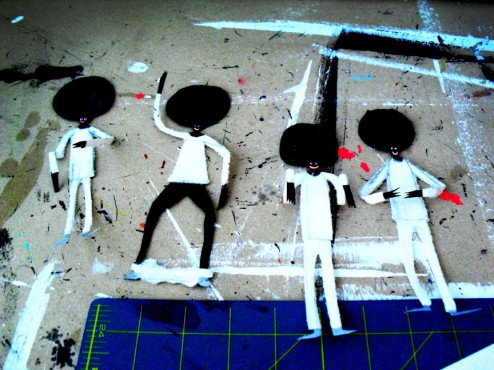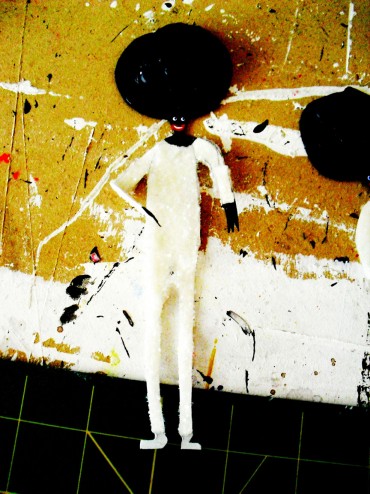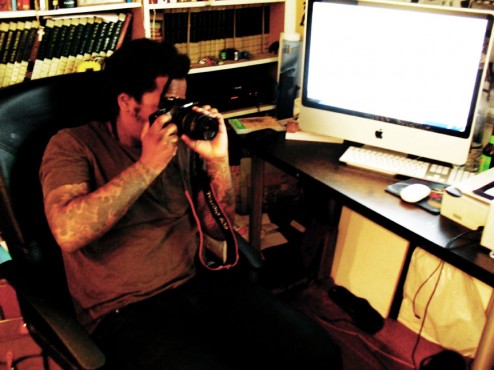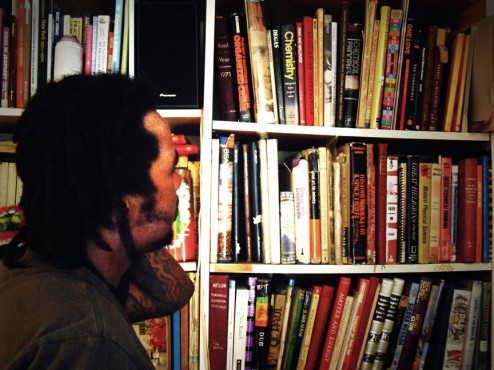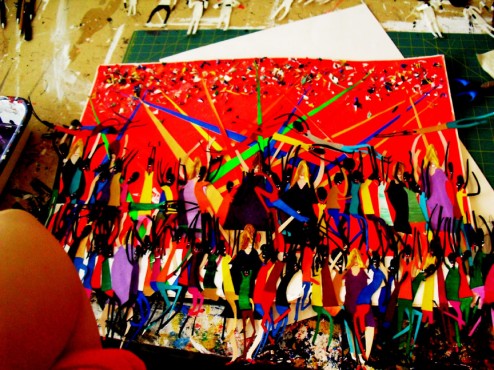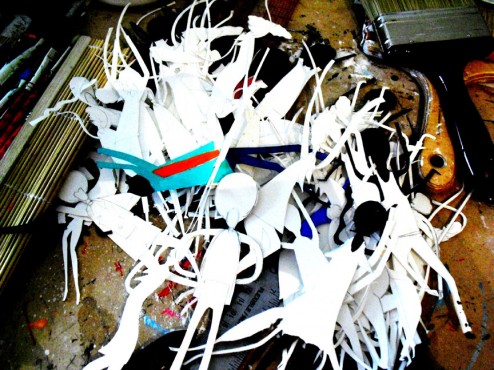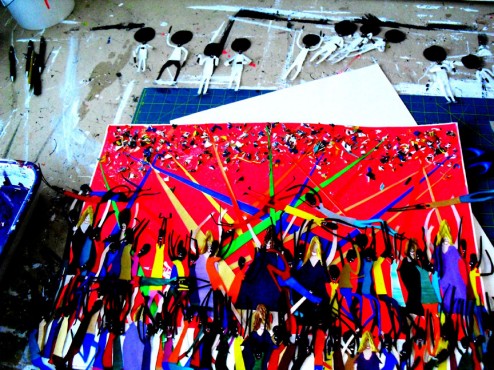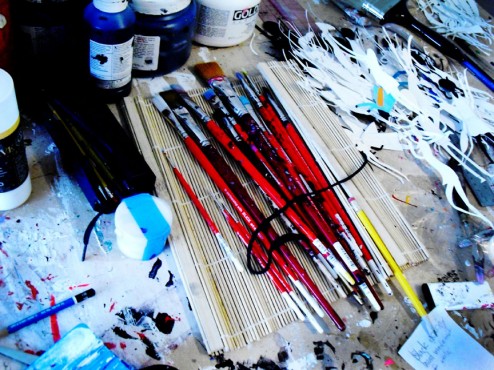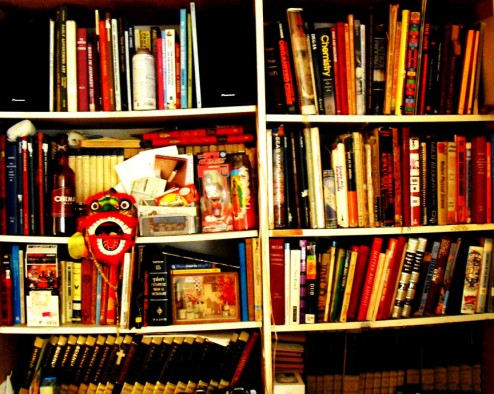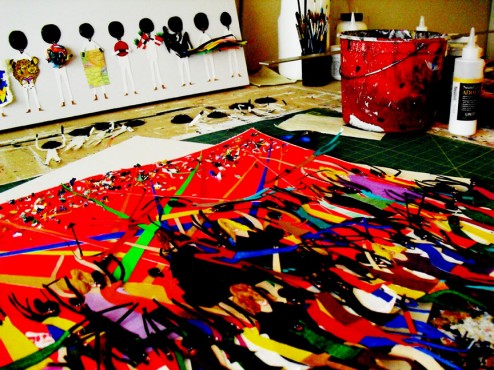“‘I Got What You Want/Need’, well that’s what I’ve come up with so far.” I’m taking the grand tour of Devin’s 30 sq ft home studio in West Covina. “It’s one of the pieces in my new two part show on clubs and drug dealers.” Interesting, I thought. His imagery is playful and humorous, yet the subject matter has an underlying tone of struggle and violence. “These guys are the good gangsters, they’re holding things, cause you know drug dealers always have something on deck to slang.” I ask him what constitutes a good gangster and on that note, what makes a person a bad gangster? “The good gangsters wear white coats, they only sell happy drugs like chronic and pills. The bad gangsters with the gold chains sell the bad drugs like crack, heroin and other addictive drugs. They’re in cahoots with the scientist to get all the black people to go back to Africa.” And so began our interview. As I delved deeper into the narrative created in his work, I was able to see beyond what I had initially judged as a compilation of simple figures and colored paper. What I saw was social commentary from an artist who felt like he didn’t quite belong.
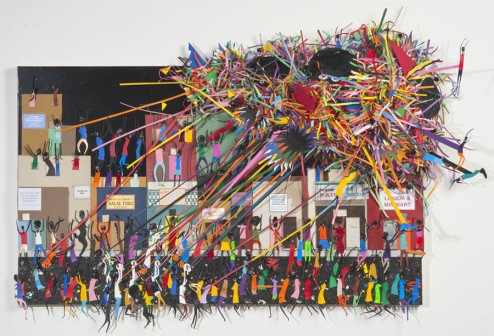
Let us get down to brass tacks. Devin Troy Strother, twenty four years old, was born and raised in West Covina, California. He graduated from Art Center College of Design, Pasadena in August of 2009. By September of that year, Devin was picked up by the Richard Heller Gallery in Santa Monica. Within three days, Heller had sold everything Devin had created during his last term at Art Center. We should also mention, his work has been sought after by hip-hop artist Kanye West. His work has also attracted such celebrity clientele as actor Jack Black. Even Tiger Wood’s loyal sponsor, Nike, took interest in the artist. Devin was commissioned by Nike to create a piece that will be part of the Nike art exhibition showing in New York next year. It’s been a good year for the artist, or as Troy Strother would put it, “Shit got real crazy, real fast.”
As we navigate the small chaotic space of cutout men, shredded paper and dirty paintbrushes, the soft instrumentals of Black Moth Super Rainbow bring a soothing cohesion to everything surrounding us. This narrative that has been playing through his head as a work in progress, one that Devin will probably continue to build upon throughout his artistic career. It may not make complete sense, it may never have a conclusion, but for now, this is the story that life has inspired him to tell.
FIONA CHAN: We first caught buzz of your work through Kanye’s blog. How did you react to this attention from one of the biggest artists in the music industry?
DEVIN TROY STROTHER: I remember I woke up at 11am that morning to answer the call from Kanye’s manager. He told me Kanye saw some of my work online and wanted to purchase the piece The Block is Hot. I thought someone was playing a prank on me, so I was like, “Shut the fuck up! Who is this? You’re lying to me.” It makes sense he would want that piece, it’s very him.
FC: So why do you think he wanted that piece specifically?
DTS: It’s a piece I made with a giant black guy in retro ’80s type workout-gear shooting lasers out of his eyes into a city of black people. The lasers are The Mix’ that sends all the black people back to Africa.
FC: Ok, stop, you lost me. What’s The Mix and what’s the deal with sending all the black people back to Africa? Is that something that you want to see happen?
DTS: No, it’s not like that. My narrative is about what if all the black people were sent back to Africa. I read about this radical called Marcus Garvey from Jamaica, who wanted to rebuild Africa during the 1920’s or something. He thought that this would be best for everyone if all the blacks went back to Africa. Anyway, there was this SNL (Saturday Night Live) skit with Eddie Murphy called the BTAM: Back To Africa Movement and I thought it was really funny so yeah, Garvey and Murphy. The Mix is a jumbled mess of colors that will transport the black people back to Africa. I like the aesthetics of it and it serves different functions on different levels. It represents movement and change, basically.
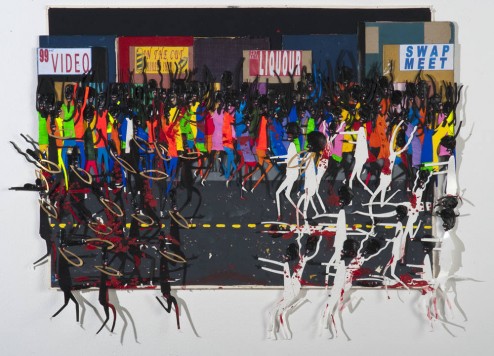
FC: So what’s your take on this BTAM thing in your work?
DTS: There’s these black scientists that send out dudes to fuck up the black areas to make the black people want to return to Africa; they’re the cause of the ghettoes. The white coats are the protectors because not everyone wants to go back to Africa.
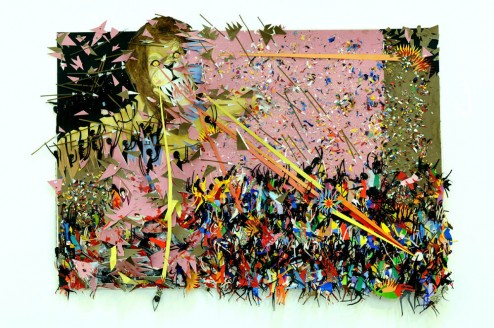
FC: Judging by the names of some of your titles, especially the more recent ones, I suspect a bit of hip-hop influence. Would you say that hip-hop culture is a main source of inspiration?
DTS: Actually I grew up listening to a lot of punk since I went to private school with mainly Filipinos and Mexicans. There weren’t many black kids to hang out with, so I didn’t get into hip-hop till I was a lot older. I guess I was somewhat white washed and I’ve been fighting with this duality of being black but not being niggerish. I’ve always been into gang documentaries and black cultural studies. I used to think about my behavior and such and wonder, “does this make me black enough?” These days my main influences are from stories I hear, music lyrics, or just random thoughts in my head.
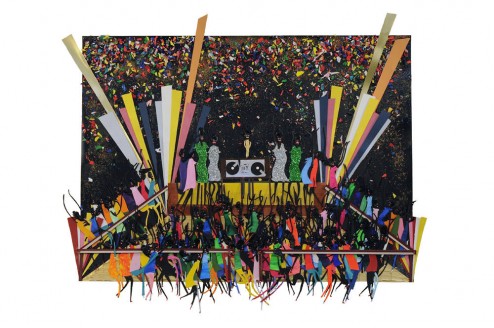
FC: Have you gotten any negative feedback from people for your use of the word ‘nigga’ in many of your titles?
DTS: I know what’s bad grammar and what’s correct grammar. I feel like people are paying for my titles just as much as they are paying for my work. It’s fucked up, it’s broken Ebonic English, it’s ghetto, packed and framed in a pristine manner, and that’s how people like it. It’s a duality of something that costs a lot of fuckin’ money. I haven’t had any negative reviews that I know of from black people, so far. My parents were somewhat concerned. But no matter what though, even if it does piss a few people off, at least they are feeling something. Good or bad, all that matters is that people feel something from my work.
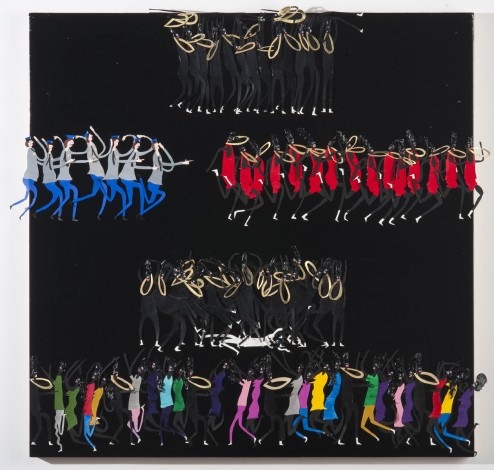
FC: What should we be expecting to see from you in your next show?
DTS: The show will be split into two sections. The first section is Club Sugar Shark and the second is Drug Dealers. Club Sugar Shark is from Marvin Gaye’s album cover, I Want You. It’s the same painting they had in Good Times, lots of black families have it in their homes. Basically, I took this image and created a narrative of what will go down at the club. Skinny Black Niggas and Big White Girls Night is part of the installation. It’s funny cause you know skinny niggas like big white girls. This piece here is not complete yet, I’m not sure what it’s going to be called I Got What You Want / Need, well that’s what I’ve come up with so far. It’s part of the Drug Dealers section where I explain what it’s like getting into the process of drug dealing and the end result of drug dealing. Each dealer is holding something, so this one with skulls represents death. The two guys holding the painting I call the We Got This Matisse Shit, an homage to Matisse, the first artist to do the cut and paste thing. This guy holding the map of Africa is I Got the Map Back Home. In total there should be 48 guys for this one piece by the time I’m done.
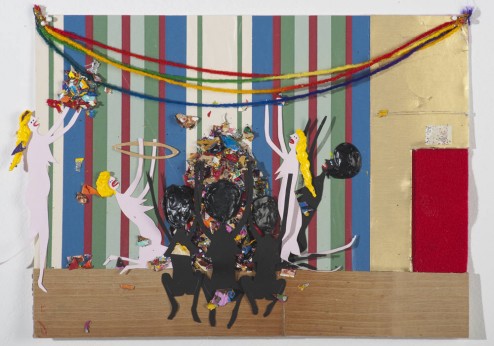
(All images provided by the Richard Heller Gallery)
(photos taken at Devin’s studio, below)
